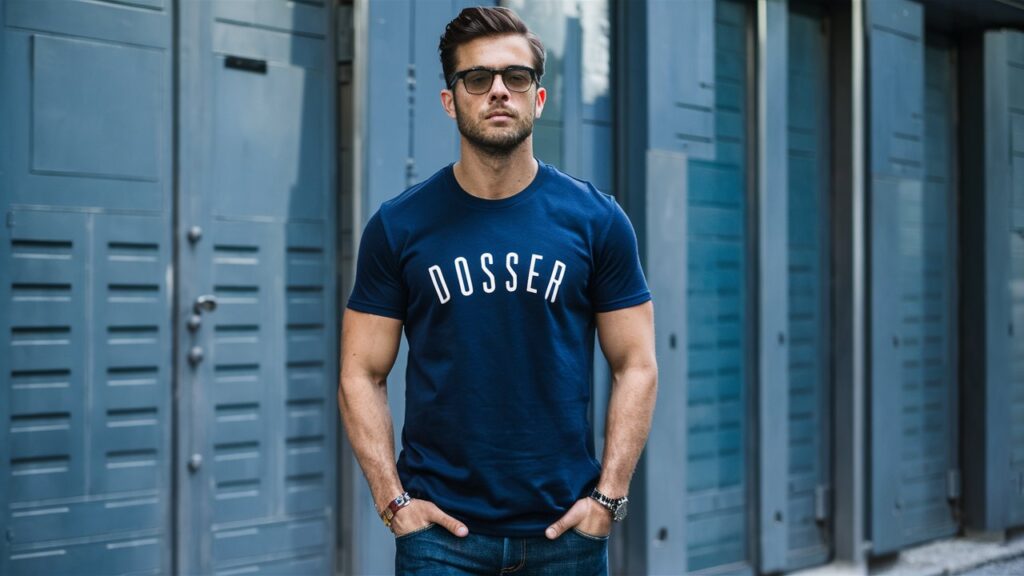
How to Start Your Own Fashion/Clothing Brand?

Overview
Dreaming of making it big in fashion? Starting your own clothing brand is exciting and challenging. Want to know how? From creating unique designs to building a strong brand, success demands planning and strategy. This guide walks you through the essential steps, helping you launch your fashion empire. Whether you’re a budding designer or savvy entrepreneur, it’s your roadmap to turning dreams into reality. Now this is the serious discussion for having Own Fashion/Clothing Brand.
In this comprehensive guide, we’ll explore the essential steps and insider tips for launching your own fashion or clothing brand. The fashion industry is a dynamic landscape, offering opportunities for creativity and innovation to dreamers and entrepreneurs alike. Success in this competitive arena depends not only on design flair but also on strategic planning. From market research to defining your brand identity, we’ll delve into the crucial aspects of starting a fashion brand. Whether you’re a budding designer or an aspiring business tycoon, this article serves as your roadmap to navigating the complexities of the fashion industry and building a thriving, sustainable brand.
Table of Content :
Introduction
The fashion industry is always changing, attracting both dreamers and entrepreneurs with its promise of creativity and potential. Success here isn’t just about design skills; it’s also about smart planning. In this article, we’ll guide you through starting your own fashion brand, covering everything from research to branding. Whether you’re a designer or a business-minded person, this article is your guide to success in the fashion world. Now let’s start the planning for Own Fashion/Clothing Brand.
Embarking on the journey to launch your Own Fashion/Clothing Brand requires careful consideration and strategic thinking. From identifying your target audience to creating compelling designs that resonate with them, every step plays a crucial role in shaping the success of your brand. Moreover, establishing a strong online presence through social media platforms and e-commerce websites can significantly boost your brand’s visibility and reach. By leveraging digital marketing strategies and engaging with your audience authentically, you can cultivate a loyal following and drive sales for your fashion brand.
In this competitive industry, staying true to your brand’s vision and continuously adapting to market trends are key to staying ahead of the curve and achieving lasting success with your Own Fashion/Clothing Brand.
Conducting Market Research

- Understanding target audience demographics:
- Utilize tools like surveys, focus groups, and social media analytics to gather data on age, gender, location, and lifestyle of your target audience.
- Identify their shopping behaviors, preferences, and purchasing motivations to tailor your brand and products accordingly.
- Conduct thorough target audience analysis, demographic research, and consumer profiling to craft a brand that resonates with your ideal customers.
- Find the way to explore or where is your own fashion/clothing brand exposer.
- Analyzing market trends and consumer preferences:
- Stay abreast of the latest fashion trends through industry publications, trend forecasting agencies, and fashion shows.
- Analyze consumer preferences by studying popular styles, colors, fabrics, and design elements.
- Keywords: fashion trend analysis, consumer preferences, market trend research
- Identifying competitors and market gaps:
- Conduct a comprehensive analysis of existing fashion brands and competitors within your niche.
- Identify gaps in the market where your brand can offer unique value propositions or address unmet needs.
- Keywords: competitor analysis, market gap identification, competitive landscape assessment
Defining Your Brand Identity

Own Fashion/Clothing Brand
- Crafting a unique brand story and vision
- Identify the inspiration behind your brand: What motivated you to start your fashion/clothing brand?
- Define your brand’s mission statement: What purpose does your brand serve, and what values does it uphold?
- Communicate your brand’s narrative: How does your personal story intertwine with the ethos of your brand, and how does it resonate with your target audience?
- Developing a distinctive aesthetic and design philosophy
- Explore your creative vision: What visual elements and design principles define the aesthetic of your brand?
- Establish a signature style: How do you differentiate your designs from competitors, and what makes them instantly recognizable?
- Incorporate storytelling into your designs: How can you infuse your brand’s narrative and values into the fabric of your creations?
- Establishing brand values and personality
- Identify core values: What principles guide your brand’s decision-making process and define its ethical stance?
- Define your brand’s personality: Is your brand playful and whimsical, or sophisticated and timeless? How does this personality translate into your branding and communication?
- Cultivate authenticity: How do you ensure that your brand’s values and personality shine through in every interaction with customers, from product design to customer service?
Creating a Business Plan

Let’s work on Own Fashion/Clothing Brand Most important topic:
- Setting clear goals and objectives:
- Define the mission and vision of your fashion brand.
- Establish specific short-term and long-term goals, such as revenue targets, market share, and brand recognition.
- Outline actionable strategies to achieve these goals, including marketing campaigns, product launches, and expansion plans.
- Outlining financial projections and budgeting:
- Conduct thorough market research to forecast sales potential and revenue streams.
- Create detailed financial projections, including income statements, cash flow forecasts, and balance sheets.
- Develop a comprehensive budget covering expenses such as production costs, marketing, distribution, and overhead expenses.
- Determining business structure and legal requirements:
- Choose the most suitable business structure, whether it’s a sole proprietorship, partnership, corporation, or LLC, considering factors like liability, taxes, and management flexibility.
- Register your fashion brand with the appropriate authorities and obtain necessary licenses and permits.
- Ensure compliance with local, state, and federal regulations governing intellectual property, employment, taxation, and product safety.
Designing Your Product Line

- Developing a Cohesive Collection Concept
- Brainstorming creative themes and inspirations
- Sketching and conceptualizing designs that align with the brand’s aesthetic and target audience
- Ensuring coherence and harmony across the entire collection to convey a unified brand message
- Sourcing Quality Materials and Suppliers
- Researching and identifying reliable suppliers that offer high-quality materials consistent with the brand’s standards
- Negotiating favorable terms and pricing agreements while maintaining quality control
- Conducting thorough inspections to ensure materials meet design specifications and ethical sourcing standards
- Prototyping and Product Testing
- Creating initial prototypes to bring designs to life and assess feasibility
- Soliciting feedback from focus groups or industry experts to refine designs and address potential flaws
- Conducting rigorous product testing for durability, comfort, and fit to ensure customer satisfaction and adherence to quality standards
Building Your Brand Presence

- Designing a standout logo and visual identity
- Craft a visually striking logo that reflects your brand’s personality and values.
- Ensure consistency in typography, color palette, and design elements across all brand collateral.
- Invest in professional graphic design services to create a memorable and cohesive brand identity.
- Creating a compelling brand narrative and messaging
- Develop a captivating brand story that resonates with your target audience and communicates your brand’s mission and vision.
- Craft clear and compelling messaging that articulates your brand’s unique selling propositions and value proposition.
- Incorporate storytelling into your marketing materials and content to evoke emotion and forge connections with your audience.
- Establishing an online and offline presence
- Build a user-friendly and visually appealing website that showcases your products, brand story, and values.
- Leverage social media platforms to engage with your audience, share content, and build a community around your brand.
- Explore offline marketing channels such as pop-up shops, events, and collaborations to increase brand visibility and reach new customers.
Marketing and Promotion Strategies

- Leveraging Social Media Platforms for Brand Awareness:
- Create engaging content tailored to each platform (Instagram, Facebook, WhatsApp, etc.).
- Utilize targeted advertising to reach specific demographics and expand your audience reach.
- Engage with followers through interactive posts, behind-the-scenes content, and user-generated campaigns.
- Implementing Influencer Collaborations and Partnerships:
- Identify relevant influencers whose audience aligns with your brand values and target market.
- Negotiate mutually beneficial partnerships, including sponsored content, product placements, and brand ambassadorships.
- Monitor and analyze the impact of influencer collaborations through metrics such as engagement, reach, and conversion rates.
- Planning Promotional Events and Campaigns:
- Organize fashion shows, pop-up shops, or trunk shows to showcase your products and engage with customers in person.
- Collaborate with other brands or organizations to co-host events and amplify your reach.
- Launch strategic promotional campaigns tied to seasonal trends, holidays, or special occasions to generate excitement and drive sales.
Sales and Distribution Channels

Choosing the right sales channels:
- Assessing the suitability of various channels, including e-commerce platforms, brick-and-mortar retail stores, and wholesale distribution networks.
- Understanding the unique advantages and challenges of each channel to determine the best fit for your brand’s products and target audience.
- Conducting market research to identify consumer preferences and purchasing behaviors across different sales channels.
Negotiating contracts and agreements with retailers:
- Establishing mutually beneficial partnerships with retailers through comprehensive contract negotiations that outline terms and conditions, pricing structures, and distribution arrangements.
- Ensuring clarity and transparency in contractual agreements to mitigate potential disputes and misunderstandings down the line.
- Collaborating closely with retailers to align brand objectives and strategies, fostering strong relationships built on trust and mutual success.
Implementing inventory management and fulfillment processes:
- Implementing robust inventory management systems to track stock levels, monitor product performance, and optimize inventory turnover rates.
- Streamlining order fulfillment processes to ensure efficient and timely delivery of products to customers, minimizing fulfillment errors and delays.
- Leveraging technology solutions such as inventory management software and automated order processing systems to enhance accuracy and scalability in managing inventory and fulfillment operations.
Managing Operations and Logistics

- Setting up efficient production and supply chain processes:
- Streamlining manufacturing processes to minimize lead times and production costs.
- Establishing strong relationships with reliable suppliers to ensure timely delivery of materials and components.
- Implementing lean production principles to optimize resource utilization and reduce wastage.
- Managing inventory and logistics effectively:
- Utilizing inventory management software to track stock levels and monitor product movement.
- Implementing just-in-time inventory practices to minimize storage costs and reduce the risk of overstocking.
- Developing efficient logistics strategies for transporting goods from manufacturing facilities to distribution centers and retail outlets.
- Ensuring quality control and customer satisfaction:
- Implementing rigorous quality control measures at every stage of the production process to maintain product consistency and integrity.
- Conducting regular inspections and audits to identify and address any quality issues promptly.
- Soliciting feedback from customers through surveys and reviews to gauge satisfaction levels and identify areas for improvement.
Conclusion
Recap of key points and takeaways:
- Market research: Understanding your target audience and market trends is essential for identifying opportunities and staying ahead of the curve.
- Brand identity: Crafting a unique brand story and aesthetic sets the foundation for building a memorable and impactful brand.
- Strategic planning: Developing a comprehensive business plan and implementing effective marketing strategies are critical for long-term success in the fashion industry.
Encouragement for aspiring fashion entrepreneurs:
- Embrace creativity: Let your imagination soar and fearlessly pursue your unique vision in the ever-evolving world of fashion.
- Persevere through challenges: Building a fashion brand is a journey filled with highs and lows; stay resilient and learn from setbacks along the way.
- Seek mentorship and support: Surround yourself with a network of mentors, peers, and industry professionals who can offer guidance and encouragement throughout your entrepreneurial journey.
Final thoughts and next steps:
- Stay adaptable: Remain agile and open to adapting your strategies and approaches as the industry evolves and consumer preferences shift.
- Continuously innovate: Keep pushing boundaries and experimenting with new ideas to keep your brand fresh and relevant in the fast-paced fashion landscape.
- Take action: Armed with knowledge and inspiration, take decisive steps towards turning your fashion dreams into reality. Whether it’s launching your first collection or expanding your brand’s reach, the journey begins with a single step.

